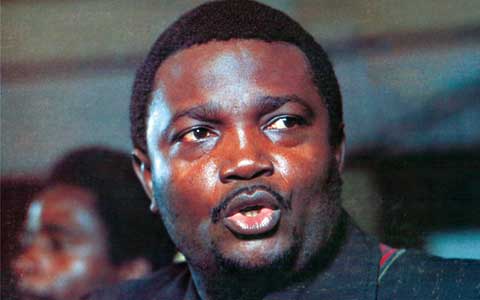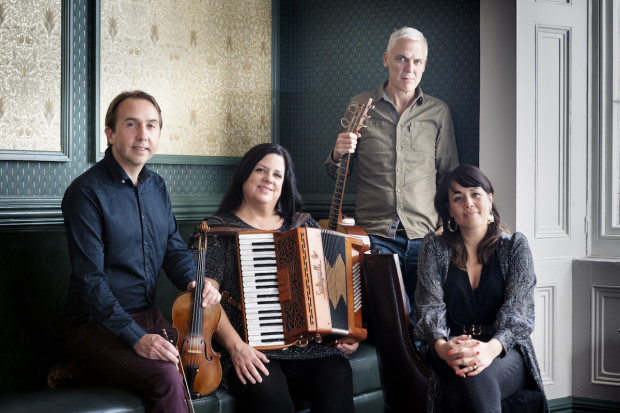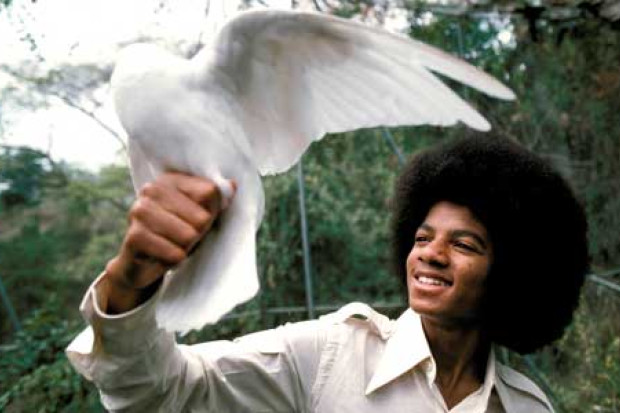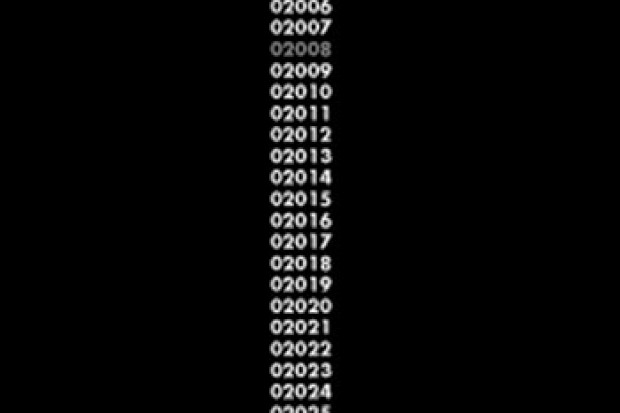
After Franco
The music of the Democratic Republic of the Congo has faced a dilemma since the death of its greatest exponent, Franco Luambo Makiadi. The leader of TPOK Jazz, Franco’s orchestra defined the sound of Congolese music from the late 1950s until his death in 1989. Within Africa, Franco is an icon. His death, however, prompted a steady decline in Congolese music in the 1990s and in many ways it remains overshadowed by him.
Sam Mangwana, one of his most celebrated collaborators, described Franco’s importance in Graeme Ewens’ Congo Colossus: ‘Franco was unique. Like Shakespeare or Mozart, combined with Pelé or Muhammad Ali. He was irreplaceable. The sort of man who appears once every 100 years.’ Mangwana’s sentiments may seem a bit exaggerated, but they would be shared by many Africans. His words and actions were as influential as his music. Yet outside of Africa Franco and his orchestra remain virtually unknown, and there are a number of reasons for this.
African music exploded onto the world music scene in the late 1980s following the success of Paul Simon’s Graceland album. Graceland, however, may not have been possible without the pan-African influence Franco and TPOK Jazz exerted in the 1960s and 70s. Almost every African band since then owes something to the sound he pioneered. For Franco, Graceland came a decade too late. In the late 1970s he was at the height of his powers, but by 1988 he was dying and rarely able to perform. In essence, he missed the African music boom that could have made him a global star. Consequently, nowadays one would be hard pushed to find any of Franco’s music in even the biggest music stores. Disputes between Franco’s family, former band members and record companies have meant the music is poorly distributed and promoted. This is being partially redressed by Sterns African Music, who have recently released two compilations of some of Franco’s most important songs under the title Francophonic.
These two compilations however cannot do Franco justice. He is said to have recorded over 3,000 songs with TPOK Jazz, 1,000 of which are said to be his own compositions. While many songs were released on CD on the Sonodisc label, this catalogue is no longer in print and only a few of these records are available on iTunes. Worse still, these Sonodisc recordings were poorly produced, often mixing two or three tracks from different LPs recorded at different times. Very few Franco albums, therefore, have ever been released outside of Africa in their original track-listing.
Other factors may have influenced the lack of appreciation for Franco’s music outside of Africa. The term ‘jazz’ in the orchestra’s title, for example, is misleading. Many African orchestras use the word ‘jazz’ in their title but don’t play what we generally known as jazz. Similarly, the term ‘orchestra’ is misleading because the instrumentation of an African orchestra is completely different to a classical one. At its peak TPOK Jazz contained forty musicians consisting of multiple electric guitars, a large group of singers, drums, percussion, dancers and a powerful brass section containing trumpets, trombones and saxophones. Most TPOK Jazz songs are also sung in the native Lingala language, so there is also a language barrier, which prevents many from understanding the social importance of the lyrics.
This is the key differentiation between the reception of the Nigerian pioneer of Afro-beat, Fela Kuti (1938–97), and Franco in the English speaking world. In 2004 the Barbican in London presented a huge festival honouring Fela Kuti’s legacy. Last year was the twentieth anniversary of Franco’s death, but the event was marked only by a handful of small events outside of Africa. Kuti’s greater reception in the West is largely because most of his songs are in English. They also relate more closely to the sound of James Brown, so there is more of a Western aspect to his music. This is not to demean Fela Kuti – he was a true original – but it is widely agreed that TPOK Jazz was the most influential orchestra Africa has produced. The sound Franco pioneered can be heard across Africa and subsequently the world through recordings by artists such as Paul Simon and Talking Heads. Yet how many of their admirers have ever even heard of Franco and OK Jazz?
Some context is needed. In the 1950s the Democratic Republic of the Congo was a Belgian colony. The country was ruled ruthlessly by the Belgian King Leopold II until its independence in 1960. Prior to independence, Congolese troubadours such as Jean Bosco-Mwenda had fused their own folkloric music with popular Latin American imports such as the rumba, cha-cha-cha, merengue and bolero. In doing so they created an intricate finger-picking acoustic guitar style. Mwenda’s biggest hit ‘Masanga’ is known internationally; guitarist John Williams is amongst those who have recorded it.
One of the few positive outcomes of colonialism was the fact that one Belgian, Bill Alexandre, a colleague of Django Reinhardt, was sent to record the newly developing Congolese Rumba. Alexandre encouraged some of the finest Congolese musicians of the time to record for him. Perhaps most importantly, he introduced them to the electric guitar. In doing so he helped to create the instantly recognisable chiming African guitar sound, which gained such worldwide currency after Graceland. It was Franco, however, who really developed this sound.
Franco’s mastery of the guitar brought him his initial fame with OK Jazz in the late 1950s, earning him the nickname ‘The Sorcerer of the Guitar’. His guitar playing is the highlight of the early OK Jazz recordings. His voice didn’t match his guitar skills, but he was a master band leader and through the years he surrounded himself with some of the finest singers of the time.
That said, there was a distinct character to his voice, which ensured he could deliver a song with passion or authority when needed. In the bolero ballad ‘Kinshasa Mboka Ya Makambo’ (1982) (Kinshasa Town of Problems), Franco combined his guitar skills and distinct vocal delivery to powerful effect. He didn’t sing the song so much as preach it like an evangelical minister, passionately praising the virtues of the Lord before unleashing a guitar solo straight from the heavens.
The first performance of this song took place during TPOK Jazz’s crowning moment, a two-and-a-half hour special on national television, which showcased the orchestra in its full glory. (Thankfully this performance has been preserved and excerpts from it are available on YouTube.) Watching this performance gives a sense of how seriously Africans take this music. The audience sit politely, listening like an audience at a classical music concert. This is because the musicianship of the players and important social context of the lyrics demanded serious listening at the time.
Much is made of the similarities between Congolese and Cuban music. Indeed, when one first hears the opening bars of an early OK Jazz recording, the casual observer may think it is, in fact, Cuban music. It is easy to forget that African slaves brought their music to Latin America, and as a result Cuban music is infused with rhythms that originated in Africa. Franco explained that in using Latin rhythms, Congolese were simply bringing their music back home.
Over time the Latin influence would wane and the name soukous (meaning ‘to shake’) was given to the Congolese sound – and it was Franco who brought this sound to maturity. Franco’s ambition increased as recording technology improved. He developed from a shy young man into the natural leader of the group, taking over from its founder Jean-Serge Essous in 1957. It wasn’t long before he rechristened them Tout Puissant OK Jazz (The Almighty OK Jazz). Between the late 50s and early 70s the orchestra grew into its classic orchestra line up. Many African orchestras followed their lead, but none reached the size and standard of TPOK Jazz. By then the song styles had evolved from short Latin-influenced songs into epic masterpieces, with many extending beyond ten minutes. The recording technology couldn’t keep up with the evolution of the songs and in the 60s and 70s it became commonplace for one song to be divided over the two sides of a vinyl record, with the vocalised rumba section on one side and the instrumental sebene section faded in on the other side.
It is the sebene that really distinguishes Congolese music from any other style, and in order to understand it, one must understand the function of each section of the Congolese orchestra. At the heart of this orchestra are the drums, percussion and bass guitar. In early Congolese rumba there was no drum kit; congas, shakers and clavé produced the polyrhythms. As the music evolved, a drum kit was introduced and the congas served a semi-melodic function, filling in gaps left by the syncopated bass lines. TPOK Jazz recordings from the 1970s reveal a fascinating dialogue between these instruments.
The guitar is not such an important instrument in Cuban music, but it is so important in Congolese music that in the golden era of Congolese rumba, in the 1970s and 80s, most Congolese groups had three guitarists with very specific roles: rhythm, mi-solo and lead. While the rhythm guitar lays down a basic cyclic pattern, the mi-solo and lead guitar create intricate intertwining lines. The mi-solo is a bridge between the ecstatically high-pitched lead guitar and the low-pitched rhythm guitar.
The vocal style of Congolese rumba is naturally influenced by the Lingala language in which it is sung. If one listens to Lingala, one will notice the similarities between the speaking style and the singing style. Vocalists sing long melodic lines in a swinging, disjointed rhythm against the clavé rhythm that underpins most of the songs. These complex melodies are often sung in harmony by four vocalists, and when the singing ends, the instrumentalists raise the temperature with the sebene.
The singing style naturally influenced the brass playing which gives Congolese music its edge. In early Congolese rumba a clarinet or saxophone would often provide short jazzy solos between song verses. As the music developed through the 60s and 70s these solos were less common and the clarinet fell out of fashion to be replaced by increasingly larger brass sections. These brass sections were used sparingly but they came to the fore in the sebene.
In the sebene, there are at least three or four contrapuntal guitar lines which repeat against each other with slight variations – strummed chords are rare. After repeating one section of contrapuntal ostinati a number of times, new sections are introduced and the instrumental timbre thickens until powerful antiphonal phrases are exchanged between trumpets, trombones and saxophones, bringing the sebene to an exhilarating climax.
While this is the general formula of these songs, there are some variations, including the use of lilting 6/8 mboshi rhythms. In the 1960s, James Brown-like funk could be heard in some of TPOK Jazz’s songs, but Brown’s influence was only fleeting. What is remarkable is how Franco and his colleagues wrote so many songs in the same basic formula, yet never repeated themselves.
At over seventeen minutes, ‘Bina Na Ngai Na Respect’ (Dance with Me with Respect), is perhaps the finest example of the orchestra’s epic songs from this period. The four-volume LP set from which it comes, Le Quart de Siécle (1981), is the towering achievement of Congolese music. Unfortunately it has never been re-issued in its original LP sequence since its release, and has instead suffered the Sonodisc butchering treatment. But the internet age brings its advantages, and one enlightened blogger has digitised the four LPs. Intrepid googling can reveal great riches!
Other excellent LP sets are the double albums Editions Populaires (1974), 20éme Anniversaire (1976) and Vraiment en Colére (1980). Missile (1983), in which Franco overdubs up to nine guitars on some tracks to create intricate guitar orchestrations, is significant for demonstrating his use of the modern studio.
In his lyrics, Franco addressed issues ranging from politics to social matters. His biggest hit, ‘Mario’ (1986), a hypnotic fifteen-minute duet with Madilu System, the star TPOK Jazz singer of the 1980s, was a damning song about a gigolo. Though generally supported well by President Mobutu, Franco was imprisoned in 1979 for ‘Helene’ and ‘Jacky’, two songs with graphic sexual content deemed obscene by the Attorney General Kengo wa Dondo. Franco later used the song ‘Taillieur’ (Tailor) to satirise Dondo, who was by then the Prime Minister.
Franco’s most notable social commentary came in his foreboding epitaph ‘Attention na SIDA’ (Beware of AIDS) (1987), in which he preached in French to ensure as many Africans as possible would understand his warnings against the disease that ultimately claimed his own life. This powerful sixteen-minute sermon sent shivers through Africa and was a vital educational tool in the battle against AIDS.
Congolese music has never really recovered from Franco’s death, but its decline was set in motion long before he passed. In the 1970s a younger breed of band appeared, spearheaded by Zaiko Langa Langa and Viva La Musica. They posed a threat to the popularity of TPOK Jazz by appealing to younger audiences, discarding brass instruments and the slow rumba section in favour of guitar histrionics and a faster rhythm.
While their initial recordings were fresh and innovative, early signs of the superficiality that would plague Congolese music from the 1990s were apparent in the outlook of the main force behind both groups, Papa Wemba. Wemba, who died in 2016, was a style icon and his obsession with fashion has clearly influenced modern Congolese musicians. The 2003 BBC documentary The Importance of Being Elegant cruelly demonstrated how Wemba had fallen foul of the worst aspects of commerciality. He proudly exclaimed how fashionable he was in purchasing the finest fur coats in Paris, and sang about how wonderful his designer clothing collection was. This had a terrible effect on young Congolese who felt compelled to keep up with Wemba’s latest fads. Wemba was doing this from the comfort of Paris whilst his homeland was torn apart by civil war. His passing is indeed sad, but one hopes he is remembered more for his vibrant recordings of the 1970s than his latter opulence.
Wemba’s decline demonstrates that the important social context of Congolese music pioneered by Franco has almost totally disappeared – now many Congolese musicians seem more intent on bland westernised entertainment than musical integrity. Gone are the powerful brass sections, which have been replaced by grating synthesized brass sounds; gone are the chiming guitar sections, a lone distorted guitar now often maintains the sebene.
The superficiality of Congolese music reached its nadir in the 1990s with the band Empire Bakuba. They were initially an excellent band but they are mostly remembered for Emoro, a dancing dwarf who counter-balanced singer Pepe Kalle, called ‘L’Elephant’ because of his huge size. The image of Emoro gyrating with scantily clad dancers is an enduring one, but not one that does Congolese music much favours!
This superficiality continues today. Artists such as Koffi Olomide create cheap imitations of American rap videos with fashionable clothes and jewellery in abundance. The contemporary Congolese rumba style is known as ndombolo, but the dancing style that goes with it has been banned by the government for being obscene. This ban has made the music very popular with younger people, but the music lacks the soul and integrity that made Franco’s music so vital.
Much of the blame for the demise of Congolese music can be put down to the decline of DR Congo itself. It remains a country in turmoil following President Mobutu’s exile in 1997. For all his evils, Mobutu was a champion of authentic Congolese culture in the 1970s and he treated TPOK Jazz like they were the national ensemble.
Without Mobutu’s support, TPOK Jazz may have disbanded long before their implosion following Franco’s death. Since then various splinter groups including TPOK Jazz vice president Lutumba Simaro’s Bana OK emerged due to disputes between the remaining musicians. None of these groups have come close to matching Franco and TPOK Jazz at their peak.
The final nail in the coffin for Congolese rumba was the death in 2007 of Madilu System, whose passing brought a collective national mourning not seen since Franco himself passed.
Despite this pessimistic thesis, there is room for optimism about the future of Congolese music. A new sound has emerged through Konono No.1, an innovative amplified ensemble featuring three traditional likembé instruments and junkyard percussion. Though active since the late 1970s, their album Congotronics (2004) received international attention which has seen them record and tour with Bjork and headlining a concert in London’s Barbican Theatre during the 2006 Steve Reich Phases Festival.
Konono No.1’s sound is quite different to any Congolese orchestra, yet within the group’s full name, L’orchestre folklorique TP Konono No.1 de Minigiedi, one can see the influence of Franco – the TP here is short for ‘Tout Puissant’ (The Almighty), the same prefix Franco gave his orchestra.
Another artist worthy of mention is Niwel Tsumbu. Currently resident in Ireland, Tsumbu has developed an innovative style which draws on his roots in Congolese rumba and his studies of classical music, flamenco and jazz. This combination of influences could help Tsumbu build a large international following if he is given the kind of promotion Konono No.1 have received.
The success of Konono No.1 demonstrates that Congolese music is emerging from the dark days of the 1990s when it seemed that Congolese music had died with Franco. Perhaps Tsumbu and Konono No.1 will help re-energise Congolese music to the point where Franco’s legacy will finally be appreciated outside of Africa as much as it is inside Africa, where he is simply regarded as one of the most important musicians of all time.
The definitive reference book on the life and music of Franco, from which some of the material in this article is sourced, is Congo Colossus written by Graeme Ewens, published by BUKU Press in 1994. Sterns African Music’s Francophonic compilations are currently the only widely available CD recordings of the music of Franco and TPOK Jazz. Sonodisc released many of their recordings but this catalogue is no longer available on CD. Much of it remains available in MP3 format in online stores. Many live performances of the group are available on YouTube. A recommended youtube channel where these performances and many songs can be heard is www.youtube.com/user/AboubacarSiddikh
Published on 1 February 2010
Kasongo Musanga was a Congolese scholar and musician. For more of his work, visit http://francorestored.blogspot.com.















